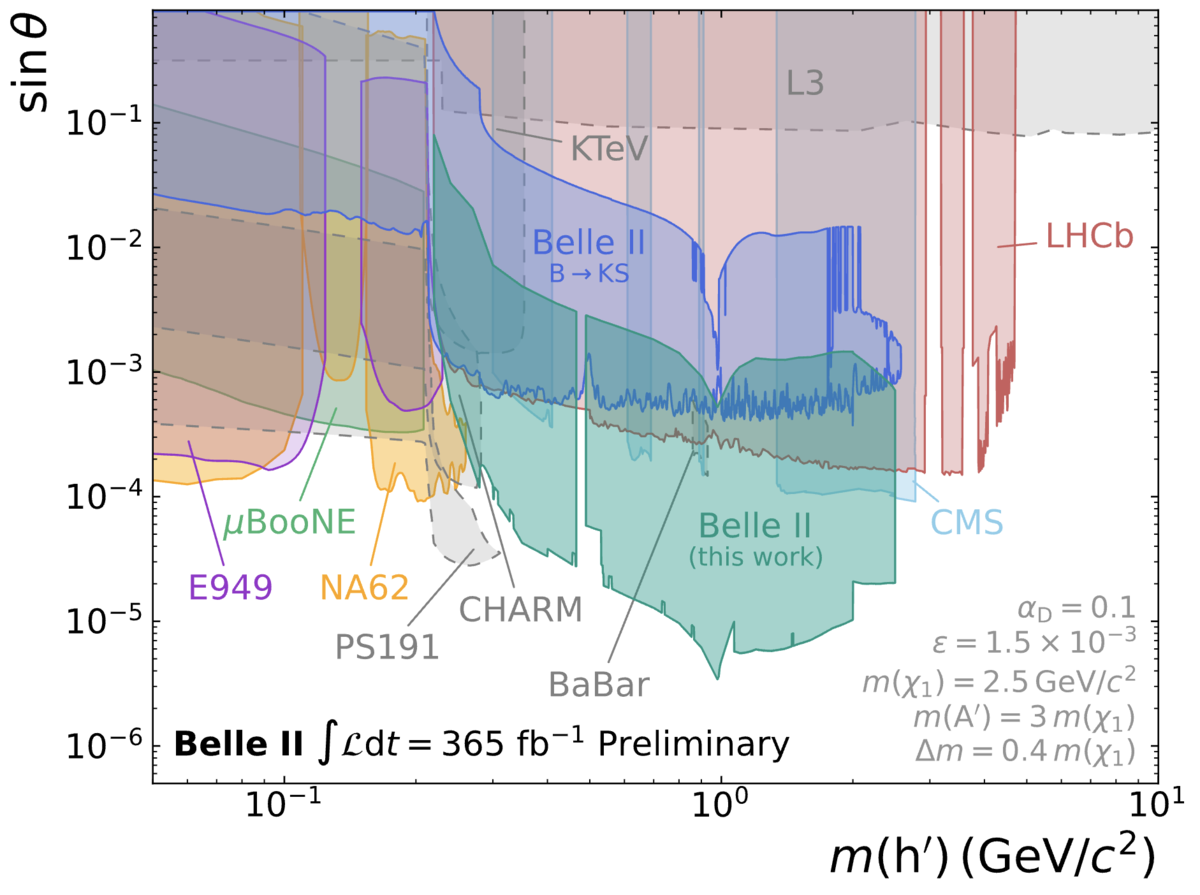Search for a dark Higgs boson produced in association with inelastic dark matter at the Belle II experiment
A new analysis from the Belle II experiment presents the first search for a dark Higgs boson produced in association with inelastic dark matter (iDM). The study targets a previously unexplored region of dark-sector physics, where a long-lived dark Higgs boson is produced alongside a dark photon. The dark photon decays into a pair of dark matter states with a small mass splitting, one of which subsequently decays back into Standard Model particles. This creates a distinctive signature of two displaced vertices and missing energy. This analysis is motivated by theoretical models that extend minimal dark sector scenarios. The resulting phenomenology includes long-lived particles with different lifetimes, off-shell decays, and multiple free parameters, making such searches particularly challenging.
The work was carried out entirely by a team at the Institute of Experimental Particle Physics (ETP) at the Karlsruhe Institute of Technology (KIT), led by PhD student Patrick Ecker, now a postdoctoral researcher at ETP. Using Belle II data corresponding to an integrated luminosity of 365 fb−1, the team scanned a wide range of parameter space, focusing on final states with muon, pion, or kaon pairs, and requiring at least one displaced vertex and significant missing energy. No significant excess over the Standard Model background was observed, and the analysis sets world-leading upper limits on the production cross section of dark Higgs + iDM events. These limits are then interpreted in terms of model parameters such as the Higgs mixing angle and the dimensionless coupling to dark photons. For many configurations, the new limits improve significantly upon existing constraints by up to two orders of magnitude.
“One of the challenges was accounting for the effect of displaced decays on particle identification,” explains Dr. Ecker. “The time-of-propagation detector (TOP), Belle II’s most advanced technology to identify different types of hadrons, assumes particles originate from the interaction point, but in our case, they don’t. This mismatch shifts the timing by a few ten picoseconds and can lead to misidentification by the very precise TOP, especially for long-lived particles.”
To cover the several thousand different combinations of lifetimes and masses allowed by the model, the team had to generate a very large number of dedicated signal simulations. This computationally demanding task relied on high-performance computing resources provided by the state of Baden-Württemberg, in particular the “Research Cluster for Neuroscience, Elementary Particle Physics, Microsystems Engineering and Materials Science (NEMO)” in Freiburg.
The article was submitted to Physical Review Letters. A preprint is available.
Contact: Prof. Torben Ferber


